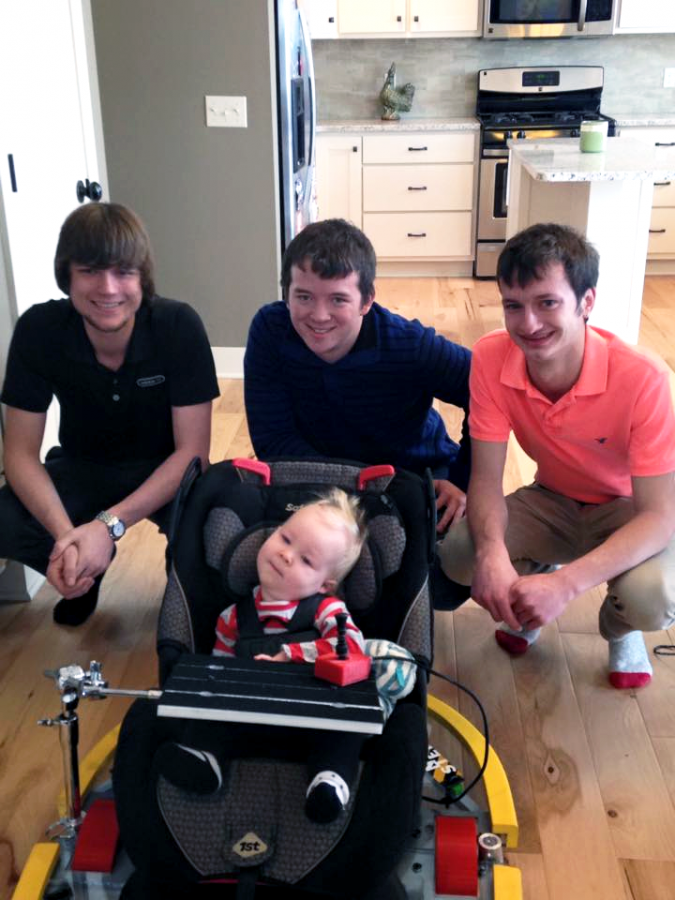Engineering mobility
Feb 26, 2015
A group of product design and manufacturing engineering students at Grand Valley State University have designed a device for children with type I spinal muscular atrophy (SMA). The device, which has been named a Play and Mobility Device, allows those who have SMA between the ages of 0 to 3 to move and be independent.
The project is funded through a $180,000 grant from the National Science Foundation for students and faculty members to create devices for people with disabilities. The Play and Mobility Device is regularly being improved, and currently, another group of students are working on improving the design so that it will be able to maneuver on thicker carpet.
Kevin Yahne, one of the students involved with the invention of the device, said the Play and Mobility Device is basically a Go-Kart that gives children who have had their mobility impaired by illnesses to have another mode of transportation. Yahne said this was the third model of the device, improved with the suggestion of Dr. Kenyon, the physical therapy professor that works with disabled children.
This particular device was designed with 16-month-old Lylah Gritter in mind, and the education provided by GVSU has played a huge part in the group’s ability to create the device, Yahne said.
“My past experience within the Product Design and Manufacturing Engineering program at GVSU has provided me with the fundamental mathematics experience and knowledge that made the design of a lightweight and robust frame possible,” Yahne said. “The engineering program also provides students with programming experience in multiple languages that made the controls system on this device possible.”
The only way in which the production process could have been better would have been if there had been more students working on the product, Yahne said.
“Both Brandon (Johnson) and I were new additions to the team since our projects were progressing so well,” he said. “The Play and Mobility Device required more attention.”
Another member of the group, Tyler Kramer has been with the project since it began.
“The team met through our class,” he said. “Originally, the project consisted of just myself and Dustin Martin, but our professor eventually added Kevin Yahne and Brandon Johnson to our team, after figuring out how much work we had to do.”
Kramer described the group as a very relaxed but focused team.
“We got to know one another very closely with the tremendous amount of time spent with each other,” he said. “Not to mention the multiple sleepless nights trying to finish the project.”
The extensive workload and sleepless nights paid off, however, as the students got to see the difference that their work made to the life of Lylah.
“I think the best part about working on this project was definitely seeing the smile on Lylah’s face at the end of the day,” Kramer said. “It is very gratifying seeing all your hard work pay off, and it makes everything worthwhile to know that we are making a significant impact on the life of a little girl who truly deserves it.”
The response that the project received from those it aimed to help also made Yahne realize the reasons that he wanted to be an engineer.
“At first, I thought that since I enjoyed knowing how things worked that engineering was the way to go,” he said. “Now that I have been given the tools to systematically analyze and optimize products and projects, I believe that I am driven to use those abilities to help people.”
The Play and Mobility Device does not just help Lylah to have greater movement, but it also shows that she is able to control a wheelchair of her own, which will qualify her for consideration for a power wheelchair.























